What is submarine optical cable?
Submarine optical cable, also called submarine communication cable. It is a wire wrapped in insulation and laid on the sea floor for telecommunications transmission between countries. The submarine optical cable system is mainly used to connect optical cables to the Internet.
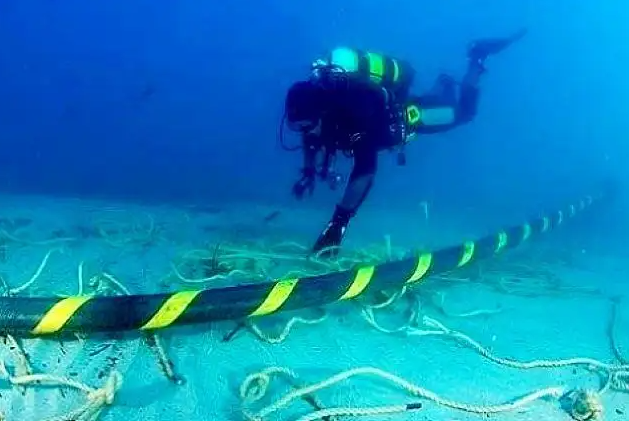
It is divided into two parts: onshore equipment and underwater equipment. The cable is the most important and vulnerable part of underwater equipment. In this day and age, we are online every day.
Through the Internet, we can keep in touch with all parts of the world and exchange information at any time. The undersea cable we are talking about today is the main artery that ensures the interconnection between the major regional networks of the world.
Submarine cables and Submarine optical cables
1. The development history of submarine cable
Undersea communication is 100 years older than the Internet, but it was done by cable.—-In 1850, the Anglo-French Telegraph Company began to lay the world’s first submarine cable between Britain and France.
At that time, only Morse telegraph codes could be transmitted. In 1866, Britain laid the trans-Atlantic submarine cable between the United States and the United Kingdom, realizing the trans-Atlantic telegraph communication between Europe and the United States for the first time. Then Bell invented the telephone in 1876, and the dream of global communication grew stronger. This accelerated the construction of the global submarine cable, which was completed in 1902.
In the 1950s, with the emergence of the Internet, people had higher requirements for the quality of calls and the speed of data transmission in undersea communications. At this time, the world’s first laser came out (1960s), people began to try to use the laser to achieve the transmission of data information in the optical fiber.
Then in the 1970s and 1980s, the Internet began to rise in developed countries around the world. And the shortage of submarine cable also began to gradually highlight, therefore, with the characteristics of long transmission distance, large capacity, that is, the submarine cable is placed high hopes!
2. The development history of submarine optical cable
As can be seen from the above, the submarine optical cable does not have a long history.
In 1988, the first Transocean Undersea cable (TAT-8) system between the United States, Britain and France was completed. The 6,700-kilometer-long cable contains three pairs of optical fibers, each with a transmission rate of up to 280 megabits per second, far faster than submarine cables. It also marks the official arrival of the era of undersea cable. The following year, an undersea cable (13,200 kilometers) across the Pacific Ocean was built, replacing coaxial cables for all inter-continental undersea communications.
With the rapid development of the Internet, the construction of global seafloor optical cable is also accelerating.
At present, there are more than 230 submarine optical cables in use worldwide, which connect six continents except Antarctica.
In addition, there are a dozen submarine cables under construction.
According to the latest statistics, the world’s submarine cable total 900,000 kilometers, can circle the Earth 22 times.
What does an undersea optical cable look like?
1. Thedifference between terrestrial optical cable and submarine optical cable
First, let’s take a look at what a terrestrial optical cable looks like,as shown below:
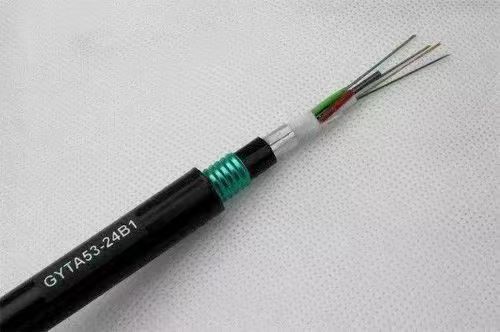
In contrast to terrestrial cables, undersea cables are tightly packed.
In fact, the biggest difference between submarine optical cable and terrestrial optical cable is “armor protection”.
Generally speaking, “armored protection” includes the following layers:
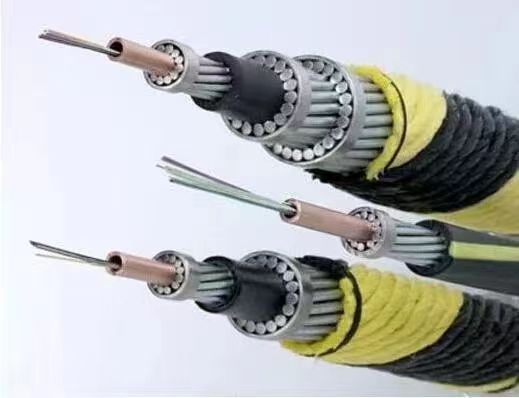
2. Why do undersea optical cables have so many layers of protection?
The first is the corrosion of the sea water, which is the main problem. Seawater is salt water, long time immersion, general materials must have been rotten.The outer polymer layer of the undersea cable is designed to prevent the seawater from reacting with the reinforcement cables to produce hydrogen.
Even if the outer layer is corroded, the inner layers of copper, paraffin, and carbonate will prevent hydrogen from damaging the fiber. The infiltration of hydrogen molecules will lead to the increase of fiber transmission attenuation.
Second, undersea cables have to withstand the pressure of the seabed, as well as natural disasters and human factors.
In addition to the above factors, sharks will also come for a bite from time to time.Therefore, without enhanced armor protection, the undersea optical cable would be dead in a minute.
3. What are the two parts of an undersea optical cable?
The submarine optical cable system consists of two parts: underwater equipment and shore equipment.
Subsea equipment, mainly including optical cables, optical Repeaters and underwater branch units.
Shore equipment mainly includes optical cable terminal equipment, remote power supply equipment, line monitoring equipment, network management equipment and ocean grounding equipment and other equipment.
Optical cable terminal equipment is responsible for signal processing, transmission and reception at both ends. Detection devices are alarm monitoring and fault location.
4.What about the repeater and the remote source equipment?
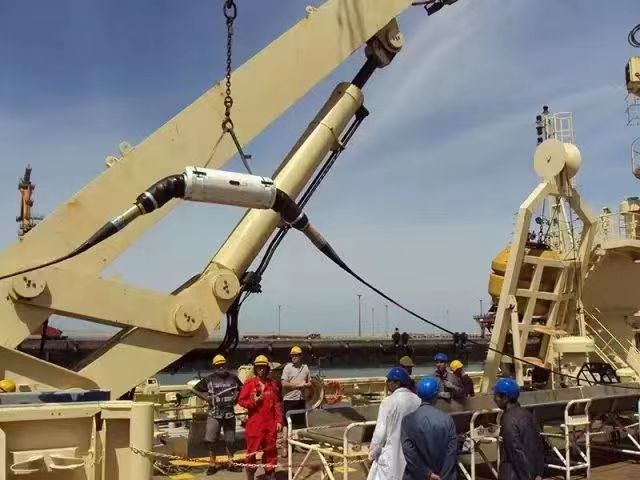
As we all know, despite the speed and bandwidth of optical fiber, the signal transmission distance is limited. Because of the decay of light, it cannot travel indefinitely. Therefore, in order to achieve long-distance transmission, a repeater is needed in the middle. The repeater, on the other hand, uses electricity. Therefore, the use of “remote power source equipment”.
This power supply is a high-voltage, low-current DC power supply, the power supply current is about 1 amp, the power supply voltage can be up to several thousand volts. Therefore, if you see an undersea optical cable, stay away from it.
How are submarine optical cables laid?
The laying of submarine optical cable is recognized as one of the most complex and difficult large-scale projects in the world. The whole laying process can be divided into two parts, that is, shallow sea area laying and deep sea area laying.
1. Laying of shallow sea areas
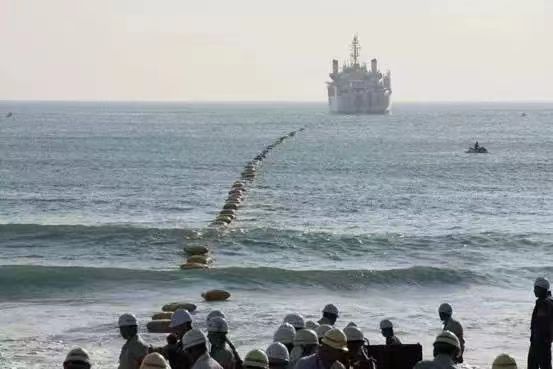
In the shallow sea area, the cable laying ship stays several kilometers away from the coast, through the traction machine on the shore. The cable will be placed on the floating bag to the shore traction, and then remove the floating bag, so that the cable sank to the bottom of the sea.
The ship needs to carry a large number of cables to be laid. The most advanced cable laying ships can carry 2,000 kilometers of cable and lay it at a speed of 200 kilometers per day.
2. Laying of deep sea areas
In the deep sea, the ship uses underwater detectors and remote-controlled vehicles to monitor and adjust to avoid uneven and rocky areas. After the route survey is completed, the cable is laid. At this point, the excavator came on.
3. The working steps of the excavator
The digger was towed by the laying boat. In addition to being a weight for the cables to sink to the bottom of the sea, it works in three steps:
In the first step, high-pressure flushing is used to create a trench about 2m deep on the ocean floor.
The second step, through the fiber optic cable hole, the fiber optic cable into the groove.
The third step is to cover the cable with the sand next to it.
Therefore, in general, the process of buried optical cable is survey cleaning, submarine cable laying and buried protection.
In this process, the cable laying ship should pay special attention to the speed of navigation, cable release speed, in order to control the cable into the water Angle and laying tension, to avoid the bending radius is too small or tension is too large and damage the fragile fiber in the cable.
How can submarine optical cables be repaired
The living environment of submarine optical cable is extremely harsh, and it is constantly threatened by various risks. Once destroyed, equivalent to the global communication aorta problem, the impact is self-evident. Therefore, Repairing submarine cable is also a necessary skill to master.
The repair process of submarine optical cable can be roughly divided into the following five steps:
The first step is to use an optical time-domain reflectometer (OTDR) to locate the general location of the fault, and then use an underwater vehicle to scan and detect the exact location of the broken undersea cable.
In the second step, the robot will dig up the cable buried on the sea floor, then cut it, and tie the cut ends to the ropes lowered from the ship to pull it out of the water.
In the three Step, Complete the repair fuse on board. The process is complicated because the hair-thick fibers in the cable must be fused one by one.
In the four step, once the new undersea cable connection is complete, is to undergo repeated testing to ensure that communication and data transmission work properly.
The fifth step is to re-drop the repaired cable into the sea, and then use the robot to bury the sand and cover it.
The future development value of it
1. Underseaoptical cables are seeing a new boom in construction
With the rise of the Internet, especially the mobile Internet, the global consumption of Internet data has grown explosively over the past decade. This growth will undoubtedly create capacity problems, so building or upgrading undersea optical cables will be the trend.
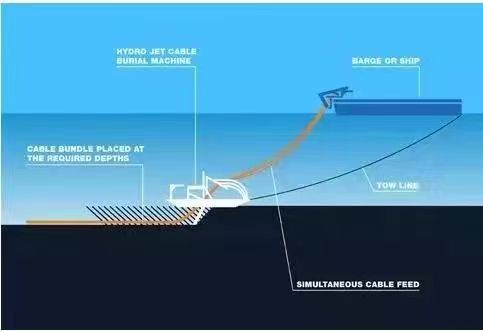
2. Sea cables will enter the era of convergence
Currently, the vast majority of the world’s submarine and optical cables are laid independently of each other.
However, in the near future, with the comprehensive development of offshore operating systems such as offshore wind power generation and offshore oil platforms, it has become an inevitable trend that a submarine cable should realize power transmission and remote control at the same time.
Therefore, the submarine cable and optical cable will also be fused, that is, to create a composite submarine photoelectric cable.
Of course, the cables of the future are not just about communication and data transmission, because in the era of the Internet of Things, they can also carry sensors to the bottom of the ocean. In the event of an undersea earthquake, big data analysis of undersea data collected from numerous sensors on the cable can not only detect tsunami pressure, but also assess and warn of potential threats in advance, helping coastal areas or relevant governments to prevent it.
3. Communication needs multi-dimensional development to win the future
Undersea cables, which have become the backbone of the global “broadband” Internet, are not yet secure enough for governments and military agencies. For example, in the Cold War between the United States and the Soviet Union, the famous “Ivy’s Bell” operation was the use of submarine cable to achieve “surveillance”, and today, eavesdropping submarine cable has even become a “standard operation” of intelligence agencies.
It’s also important to note that bringing down a country’s Internet doesn’t require cyberwarfare, just scuba gear and a pair of cable shears. In 2013, an undersea cable was sabotaged in Egypt, causing the country’s Internet speed to drop by 60%.
To sum up, if you want to occupy a dominant position in the future global Internet, it is far from enough to only rely on the construction of submarine optical cable. Only by realizing the multi-dimensional development of communication, such as trying to build air network and accelerating the development of satellite communication, can you really win the future!